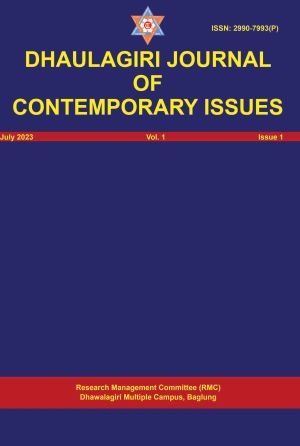Debating Human-Nonhuman Boundaries in Philip K. Dick's Do Androids Dream of Electric Sheep?
DOI:
https://doi.org/10.3126/djci.v1i1.58647Keywords:
android, artificial, blurring boundary, natural, posthumanismAbstract
This paper explores the issue of blurred boundaries between human and nonhuman (machines) in a technologically advanced world of Philip K. Dick’s novel, Do Androids Dream of Electric Sheep? employing theoretical perspective of posthumanism. It critically examines how machines, in the form of humanoid robots, are endowed with qualities that are traditionally considered human qualities. This concept of humanoid robot is unique in terms of technical artifacts and human relationship to technology. The traditional idea of humanism that regards all other nonhumans as subordinate to humans cannot function in this case. The theoretical parameters like natural and artificial, mind and body, self-developing and externally designed are used to see whether the boundary between human and machines is blurred or not. This study exposes that the writer artistically blurs the boundaries between humans and nonhumans by presenting highly advanced humanoid robots called androids with a complex Nexus-6 operating system that functions as both subject and object, user and used. Then, it moves to show the need of the present time, that is the companion relationship between man and machines. Such change gives new ways of dealing with modern problems caused by the technological advancement. Following qualitative research design and using critical analytical method for textual analysis, this study examines the dynamics of human-nonhuman relationship and blurred boundaries with the light of posthumanism. It uses the theoretical insights of Rosi Braidotti and Donna Harraway in the act of critical analysis of the textual data.
Downloads
Downloads
Published
How to Cite
Issue
Section
License
Copyright (c) 2023 Prakash Sharma

This work is licensed under a Creative Commons Attribution-NonCommercial 4.0 International License.
This license allows others to use, distribute, and build upon your work, as long as they provide attribution to you as the original creator. However, the license restricts commercial use of the work, meaning others cannot use it for commercial purposes without seeking additional permissions or licensing agreements.




